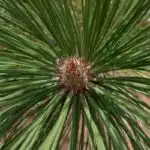Stone Pine, also known as Umbrella Pine, is a popular tree species that is native to the Mediterranean region. It is known for its unique umbrella-like shape and attractive foliage, making it a favorite among gardeners and landscapers. In addition to its aesthetic value, the Stone Pine serves several ecological purposes, such as controlling soil erosion and providing shade and shelter for wildlife.
Growing and caring for Stone Pine requires specific knowledge and skills to ensure optimal growth and health of the plant. As a plant care specialist, it is essential to understand the various aspects of Stone Pine care, such as soil requirements, watering needs, pruning techniques, pest control measures, and overall maintenance practices. This article will provide practical tips on how to grow and care for Stone Pine in your garden or landscape setting. Whether you are a seasoned gardener or just starting out with planting trees, this guide will equip you with the necessary information to nurture your Stone Pine successfully.
Overview Of The Stone Pine Tree
The Stone Pine, also known as the Umbrella Pine or Pinus pinea, is a beautiful evergreen tree that belongs to the Pinaceae family. This species of tree is native to the Mediterranean region and can grow up to 20-25 meters tall. The Stone Pine is valued for its umbrella-shaped canopy, which makes it an excellent choice for ornamental purposes.
The characteristics of the Stone Pine include thick and scaly bark, needle-like leaves that are arranged in pairs, and edible pine nuts that are produced in cones. It is also a slow-growing tree that can take more than 10 years to reach maturity. However, once fully grown, this tree can live up to 150 years.
Growing conditions for the Stone Pine require full sun exposure and well-draining soil. This species of tree thrives in warm climates with mild winters and hot summers. It can tolerate drought conditions but may require additional watering during prolonged dry spells. Overall, the Stone Pine is an excellent addition to any garden or landscape due to its unique appearance and low maintenance requirements.
Transitioning into the subsequent section about climate and environment requirements, understanding these factors will help you provide optimal growing conditions for your Stone Pine tree.
Climate And Environment Requirements
As a plant care specialist, understanding the environment and climate requirements of stone pine is essential for its proper growth and maintenance. Stone pines are native to Mediterranean regions and thrive in warm environments with plenty of sunlight exposure. These trees can grow up to 20 meters tall and have a distinct umbrella shape that makes them an attractive addition to any garden.
The ideal climate for growing stone pine trees is characterized by long, hot summers with mild winters. These trees require ample sunlight exposure, so it’s essential to plant them in an area with at least six hours of direct sunlight per day. Additionally, stone pines prefer soil with a pH range of 6.0-8.5, which is slightly alkaline.
To ensure the optimal growth of your stone pine tree, it’s crucial to monitor the amount of sunlight exposure it receives and maintain a pH level within the recommended range. The following table provides more detailed information about environmental requirements and optimal growing conditions for stone pine:
| Environmental Factors | Optimal Conditions |
|---|---|
| Climate | Warm Mediterranean |
| Sunlight Exposure | At least 6 hours/day |
| Soil pH Level | 6.0-8.5 |
Selecting the right soil for stone pine is the next step in ensuring its healthy growth and development. The appropriate soil type for these trees should be well-draining and rich in nutrients such as nitrogen, potassium, and phosphorus. In the subsequent section, we will discuss how to select the best type of soil for your stone pine tree based on its specific needs and requirements.
Selecting The Right Soil For Stone Pine
Stone pine or the umbrella pine is a coniferous tree that thrives in Mediterranean climates. However, it can adapt to different environmental conditions and soil types. To ensure successful growth and development of stone pines, selecting the right soil composition is crucial. The ideal soil for stone pine should be well-draining, slightly acidic or neutral with a pH range of 5.5-7.5.
Soil composition, pH, and drainage requirements are very important for stone pine cultivation. Before planting, it’s essential to test soil acidity and nutrient levels to determine if any amendments are needed. Organic or inorganic soil amendments such as compost, aged manure, bone meal, or perlite can help improve soil quality and provide essential nutrients to the plant. Soil preparation techniques like tilling or digging can help loosen compacted soils and create a suitable environment for root growth.
Maintaining proper moisture levels is also critical for stone pines’ growth and health. Overwatering can lead to root rot while underwatering can result in dehydration and stunted growth. Mulching around the base of the tree with organic materials like straw or leaves can help retain moisture in the soil while controlling weed growth. Container gardening is also an option for growing stone pines indoors or on patios using well-draining potting mixes with adequate moisture retention properties. Hydroponic cultivation is another alternative technique that uses nutrient-rich solutions instead of traditional soil mediums.
Understanding watering needs is crucial when caring for stone pine trees properly. Watering frequency depends on factors such as temperature, humidity levels, rainfall patterns, and container size (if container gardening). Regular monitoring of soil moisture levels with a moisture meter is recommended to avoid overwatering or underwatering plants. Adequate aeration around the roots through proper drainage systems or aerating the soil can also help maintain healthy root systems by ensuring oxygen supply and preventing waterlogging.
Moving on from selecting suitable soils for stone pine, understanding watering needs is the next step in caring for these trees properly.
Understanding Watering Needs
Stone pine (umbrella pine) requires regular watering to maintain a healthy growth rate. Generally, the frequency of watering should be determined based on the local climate, soil type, and other environmental factors. The amount of water should be sufficient to thoroughly moisten the soil, but not to the point of saturation. Overwatering can lead to root rot and other potential issues, so it is important to monitor soil moisture and adjust the frequency or amount of watering as needed.
Watering Frequency
When it comes to watering stone pine or umbrella pine, the key is consistency. These trees prefer a moderate amount of water on a regular basis rather than being drowned one day and left parched the next. To achieve this, it is recommended to water deeply once a week during the growing season, but adjust based on local climate conditions. During cooler months, reduce watering frequency and only water when the soil is dry to the touch.
Stone pines are known for their drought tolerance and can survive extended periods without water. However, it’s important not to push them to their limits as this can cause stress and damage to the tree. A general rule of thumb is to never let the soil completely dry out or become overly saturated with water. When in doubt, check the soil moisture level by inserting a finger into the soil about an inch deep.
It’s worth noting that young stone pines may require more frequent watering as they establish their root system. As they mature, they will become more self-sufficient and require less attention. Remember that consistent watering practices lead to healthier trees over time and prevent problems such as wilting or leaf drop due to poor hydration. With proper care, your stone pine tree will thrive for years to come!
Watering Amount
Understanding the watering needs of plants is crucial in maintaining their health and ensuring their longevity. As a plant care specialist, it is important to emphasize the significance of providing sufficient water for your plants. In this regard, one must consider not only the amount of water but also the ideal timing and frequency of watering.
Watering amount refers to how much water a plant requires to stay healthy. The amount may vary depending on various factors such as environmental conditions, soil type, and plant species. Generally, plants require enough water to reach their roots and hydrate them sufficiently without drowning them. Overwatering can lead to root rot while underwatering can cause wilting and even death.
Watering frequency pertains to how often a plant should be watered. The ideal frequency depends on the specific needs of each plant species. Some plants need frequent watering while others require less frequent watering. To determine the right frequency for your plants, you must consider factors such as weather conditions, soil moisture level, and growth stage. For instance, young plants may require more frequent watering than mature ones since they have smaller root systems that cannot hold as much water.
Fertilizer And Nutrient Requirements
Fertilizer and Nutrient Requirements:
In order to maintain the health of your stone pine tree, it is essential to provide it with the proper nutrients. While both organic and synthetic fertilizers can be used, organic fertilizers are often preferred as they release nutrients slowly over time and improve soil quality. Synthetic fertilizers, on the other hand, provide an immediate boost of nutrients but can also cause harm if not applied correctly.
One common nutrient deficiency in stone pines is iron chlorosis, which causes yellowing leaves. This can be remedied by adding chelated iron fertilizer to the soil or spraying a foliar iron spray directly onto the leaves. Another nutrient deficiency that may occur is nitrogen deficiency, which is characterized by stunted growth and pale green leaves. In this case, applying a high-nitrogen fertilizer can help.
It’s important to note that over-fertilization can also be harmful to your stone pine tree. Signs of over-fertilization include brown or scorched leaf edges and excessive foliage growth at the expense of root development. To avoid this, always follow recommended application rates and frequency for your specific type of fertilizer. In the next section, we will discuss proper planting techniques for your stone pine tree.
Planting Techniques For Stone Pine
Proper planting techniques are vital to the growth and survival of your stone pine. Before planting, it is important to determine whether you will be planting in a container or directly into the ground. Container planting provides greater flexibility and mobility, while ground planting allows for more space for root growth.
Regardless of the method you choose, it is essential to plant at the correct depth. Stone pines have a shallow root system, so you should avoid planting too deeply. For container plants, ensure that the soil level is just below the rim of the container. For ground plants, plant at a depth where the top of the root ball is level with the surrounding soil.
It is also necessary to prepare your planting site by providing well-draining soil and adequate sunlight. Avoid areas with standing water or heavy clay soils as this can lead to root rot and other issues. By following these simple steps for proper planting techniques, you can help ensure that your stone pine has a strong foundation for healthy growth and development.
Transitioning into pruning and training strategies, it is important to note that proper planting techniques are only one aspect of caring for your stone pine. In order to maintain its health and shape over time, regular pruning and training may be necessary.
Pruning And Training Strategies
Stone pines are known for their unique umbrella-shaped canopy, which makes them a popular choice in landscaping. Pruning techniques and training methods are essential to maintain the shape and structure of these trees. When done correctly, pruning promotes healthy growth, removes dead or diseased branches, and enhances the aesthetic value of your tree.
To prune a stone pine tree, start by removing any dead or damaged branches. Then, remove any crossing branches that may rub against each other or compete for space. Be cautious not to cut too much as it can weaken the tree’s structure. It is recommended to prune lightly in early spring or late summer when the tree is dormant.
Training methods can also help maintain the desired shape of your stone pine tree. First, stake young trees to prevent them from leaning too much due to wind or other environmental factors. You can also use wires or string to gently pull down branches that are growing too upright. This technique will encourage lateral growth and create a fuller canopy.
Pruning and training a stone pine tree require patience and careful attention to detail. With proper care, you can maintain its unique shape and ensure its health for years to come. In the next section, we will discuss managing pests and diseases that may affect your stone pine tree.
Managing Pests And Diseases
Now that we have covered pruning and training strategies for stone pine, let us move on to the next important aspect of growing and caring for this tree – managing pests and diseases. As a plant care specialist, it is crucial to adopt integrated pest management techniques to prevent pest infestations from occurring in the first place. This involves creating a healthy environment for the tree by maintaining optimal growing conditions, such as providing adequate water and nutrients.
In addition to preventing pest infestations, disease prevention strategies should also be employed. Stone pines are susceptible to various fungal diseases such as root rot and needle blight. To prevent these diseases from spreading, it is important to practice good sanitation habits such as removing any infected plant material and disinfecting any tools used during pruning or trimming. It is also recommended to avoid planting stone pines in areas where other infected trees are present.
Overall, adopting a proactive approach towards pest and disease management can go a long way in ensuring that your stone pine remains healthy and free from damage. However, despite our best efforts, common problems may still arise. In the next section, we will discuss some of these issues in detail and provide tips on how to deal with them effectively.
Dealing With Common Problems
Even with proper care, stone pines may experience problems that can affect their overall health and appearance. One of the most common issues is pests. To prevent pests from infesting your stone pine, it is important to keep the tree healthy by providing adequate water, nutrients, and sunlight. You can also use natural remedies such as neem oil or insecticidal soap to control pests like spider mites or aphids.
Another potential issue for stone pines is diseases. While these trees are generally resistant to most diseases, they may still develop fungal infections under certain conditions such as overcrowding or poor drainage. If you notice signs of a fungal infection, it is important to act quickly and remove any infected branches or needles. You can also apply a fungicide to help prevent further spread of the disease.
In addition to preventing pests and treating diseases, there are other steps you can take to ensure the health and vitality of your stone pine. Regular pruning and fertilization can help promote growth and prevent stress on the tree. It is also important to monitor your tree for signs of stress or damage caused by factors such as extreme weather conditions or improper planting techniques.
| Common Problems | Prevention |
|---|---|
| Pests | Natural remedies such as neem oil or insecticidal soap |
| Diseases | Act quickly and remove any infected branches or needles; apply fungicide |
| Stress/Damage | Monitor tree for signs; provide proper care (watering, pruning, fertilizing) |
Moving forward, it is crucial to be aware of these common problems in order to keep your stone pine healthy and thriving. In the next section, we will discuss how to identify signs of stress and damage in your tree so that you can take action before it becomes too late.
Identifying Signs Of Stress And Damage
Dealing with common problems is an essential part of caring for stone pine trees. However, identifying signs of stress and damage is equally crucial. These evergreen trees are quite resilient but can suffer from a variety of issues that might impact their growth and overall health.
One of the most common causes of stress in stone pines is insufficient watering or overwatering. Signs of under watering include wilted needles, while overwatering can cause root rot and yellowing needles. Insect infestations, fungal infections, and nutrient deficiencies can also lead to stress in these trees.
Damage to stone pines can occur due to harsh weather conditions such as frost or strong winds. Additionally, improper pruning techniques or physical injuries caused by lawn mowers or construction equipment can also harm the tree. Identifying these signs early on and taking prompt action can help save the tree from further damage or even death.
Moving forward, if you’re considering transplanting or relocating your stone pine tree, it’s essential to take proper precautions to avoid further stress or damage to the plant. In the next section, we will discuss everything you need to know about transplanting and relocating stone pine trees safely and effectively.
Transplanting And Relocating Stone Pine
Transplanting and relocating a stone pine can be challenging, but it is possible with careful planning and execution. It is important to note that stone pines do not tolerate root disturbance well, so it is best to transplant them when they are young and have smaller root systems. Relocating mature trees may result in significant damage or even death.
The best time to transplant a stone pine is during the dormant season in late winter or early spring before new growth begins. This allows the tree to establish its roots before facing the stress of summer heat. Before transplanting, prepare the new location by digging a hole twice as wide and just as deep as the root ball. Amend the soil with organic matter such as compost or peat moss to improve drainage.
Relocating a stone pine requires careful handling to minimize root damage. Dig around the tree’s drip line with a sharp spade and lift it out of the ground using burlap or a tarp for support. Keep the roots moist throughout the process and replant immediately in its new location at the same depth it was previously planted. Water thoroughly after planting and regularly for several weeks until established. With proper care, your transplanted stone pine should thrive in its new home.
Transition: Now that you have successfully relocated your stone pine, it’s important to ensure its survival through winter by implementing proper care and protection measures.
Winter Care And Protection
As the temperature drops during the winter months, it is important to ensure that your stone pine tree is well-protected. One of the key ways to achieve this is through winter pruning, which involves removing any dead or damaged branches. This not only helps to prevent potential hazards from falling branches but also promotes healthy growth in the spring.
Another important aspect of winter care for stone pine trees is frost protection. If you live in an area with harsh winters, it is advisable to provide some form of shelter for your tree. This can be achieved by covering the base of the tree with a layer of mulch or straw, which helps to insulate it from the cold. Additionally, wrapping the trunk and lower branches with burlap or other breathable fabric can help protect against frost damage.
Overall, taking steps to care for your stone pine during the winter months can go a long way towards ensuring its continued health and vitality. By performing regular winter pruning and providing adequate frost protection, you can help your tree thrive even in challenging conditions.
Moving forward into propagation techniques for stone pine trees, there are several methods that can be used depending on your preferences and experience level.
Propagation Techniques For Stone Pine
To propagate stone pine, you will need some propagation tools such as a sharp knife or scalpel, rooting hormone, and seed trays. The best time to start planting is during the early spring season when temperatures are mild. You can either use seed germination or vegetative propagation techniques for the stone pine.
Seed germination is the most common method of propagating stone pines. To begin, collect ripe cones from the tree and allow them to dry out in a warm place until they open up. Collect the seeds and soak them in water overnight. After soaking, plant them into seed trays filled with well-draining soil mix and cover with a thin layer of sand. Keep the soil moist by misting it regularly to avoid drying out.
Vegetative propagation involves taking cuttings from an existing plant and rooting them. This method allows you to create a clone of the parent plant that has identical characteristics as it. However, this technique requires more care than seed germination as it needs consistent humidity levels and warmth for optimal growth. Use a sharp knife or scalpel to take cuttings from new growth on the parent plant’s stem, dip in rooting hormone before planting into well-draining soil mix, and cover with a plastic bag to maintain high humidity levels.
To ensure successful propagation of your stone pine, choose healthy parent plants that are free from any diseases or pests. Also, make sure that your propagation tools are clean and sterilized before use to avoid transferring any infections to your new plants. Once you have propagated your stone pine successfully, the next step is finding the right varieties that suit your growing conditions and preferences.
Finding The Right Stone Pine Varieties
Stone pine cultivation is a rewarding experience for anyone who loves nurturing plants. However, before starting your journey towards growing your own stone pine tree, it’s essential to find the right variety that suits your needs. Stone pines come in various cultivars, and each has its unique characteristics.
One of the most popular varieties of stone pines is the Pinus pinea ‘Silver Crest.’ This cultivar is an excellent choice for those who want a tree with striking silvery-blue needles. It’s also known for its umbrella shape and can be grown as a single specimen or planted in rows to create a stunning visual effect.
Another popular variety is Pinus pinea ‘Napoletana.’ This cultivar has shorter needles and is more compact than other varieties, making it an excellent choice for smaller gardens. Moreover, it produces large cones that are highly sought after by wildlife enthusiasts.
If you’re looking for a rare species of stone pine, then the Pinus pinea ‘Algerian’ might be perfect for you. This cultivar has an exotic appearance and stands out from other varieties due to its twisted branches and needles. It’s also known for being more resilient to harsh weather conditions than other varieties.
Finding the right variety of stone pine is essential for successful cultivation. With various cultivars available, there’s sure to be one that fits your needs perfectly. In the next section, we’ll discuss maintenance tips necessary to keep your stone pine healthy and vibrant throughout the year.
Maintenance Tips For A Healthy And Vibrant Tree
Moving on to the maintenance of your stone pine tree, it is essential to understand that pruning techniques play a vital role in maintaining its health and vibrancy. Pruning should be carried out during the dormant season, which is typically in late winter or early spring. This process helps to remove any dead, diseased, or damaged branches that could potentially harm the tree’s overall growth.
When pruning your stone pine tree, it is best to use sharp and sterile tools to prevent any further damage or spreading of diseases. Additionally, it would be best if you avoided over-pruning as this can lead to stress on the tree and reduce its ability to photosynthesize. A simple rule of thumb is not to remove more than 25% of the tree’s foliage in one year.
Lastly, disease prevention is crucial in maintaining a healthy stone pine tree. One way to do this is by removing any infected parts immediately and disposing of them correctly. Regularly inspecting your tree for signs of pests and diseases can also help catch any issues early on before they become too severe. Overall, with proper care and attention given to your stone pine tree, it will continue to thrive for many years without any issues.
…and bring joy and beauty to your outdoor space.
Frequently Asked Questions
How Long Does It Take For A Stone Pine Tree To Mature And Produce Cones?
The maturity and cone production of a stone pine tree depends on various factors, such as propagation methods used and nutritional requirements met. Stone pines can be propagated through cuttings or seeds, with the latter taking longer to mature. It typically takes around 10-15 years before a stone pine tree starts producing cones, but this timeline can vary depending on the growing conditions and care it receives. Providing adequate nutrients, such as nitrogen and phosphorus, is crucial for the growth and development of stone pine trees. Regular fertilization should be done during the growing season to ensure optimal growth and cone production.
Can Stone Pine Trees Be Grown In Containers Or Do They Require A Large Space?
Container gardening is a popular way of growing plants, especially for those who are living in apartments or small spaces. When it comes to growing stone pine trees, container gardening can be a great option. In fact, many gardeners have successfully grown stone pines in containers for years. However, it’s important to note that stone pine trees require a large container and well-draining soil with good moisture retention properties. It’s also essential to ensure that the container has enough drainage holes to prevent waterlogging. One hypothetical example would be using a large ceramic pot filled with sandy soil mixed with organic matter such as compost or peat moss to emulate the rocky terrain where these trees naturally grow. With proper care and maintenance, your stone pine tree will thrive even in a container garden setting.
Are There Any Specific Pruning Techniques That Need To Be Followed For Stone Pine Trees?
When it comes to pruning methods for stone pine trees, it is important to understand their natural growth patterns. These trees tend to grow in a pyramidal shape, with lower branches often drooping and higher branches growing upright. To maintain a healthy and attractive tree, it is recommended to prune the lower branches as they grow and remove any dead or damaged branches throughout the year. However, excessive pruning can harm the tree’s growth and should be avoided. Additionally, it is crucial to use sharp pruning tools to avoid damaging the tree’s bark. By following proper pruning techniques, stone pine trees can thrive and add beauty to any landscape.
Can Stone Pine Trees Tolerate Strong Winds Or Should They Be Protected In Windy Areas?
Stone pine trees are known for their hardy nature and ability to withstand a range of environmental conditions. However, when it comes to strong winds, there is some debate among experts as to whether they can tolerate them or not. While some argue that the deep root system of the stone pine provides excellent wind resistance, others contend that protective measures such as staking or planting windbreaks may be necessary in particularly windy areas. As a plant care specialist, I recommend assessing the specific microclimate of your planting site and taking appropriate protective measures if necessary to ensure the long-term health and success of your stone pine trees.
What Is The Best Time Of Year To Transplant A Stone Pine Tree?
Spring is the best time of year to transplant a stone pine tree as it allows for optimal root establishment during the growing season. It’s important to prune back any damaged or diseased roots before transplanting, and to water the tree thoroughly in the weeks leading up to the move. Winter pruning can also be beneficial in shaping the tree and promoting healthy growth. When selecting a new location for your stone pine, consider its need for full sun and well-drained soil. As a plant care specialist, I recommend taking great care during the transplanting process to ensure the continued health and vitality of your stone pine tree. Remember that proper care of plants can contribute to our overall well-being and happiness, so serving them well is a noble pursuit.
Conclusion
Stone Pine, also known as Umbrella Pine, is a great addition to any garden or landscape. These trees are known for their unique umbrella-like shape and can grow up to 40-80 feet tall with a spread of 20-40 feet. It takes about 10 years for the Stone Pine tree to mature and start producing cones.
Stone Pine trees can be grown in containers but they do require a large space to grow properly. It is important to follow specific pruning techniques for Stone Pine trees as they tend to grow multiple leaders which need to be pruned back to promote one central leader. These trees are tolerant of strong winds but it is recommended that they be protected in windy areas.
The best time of year to transplant a Stone Pine tree is in late winter or early spring before new growth begins. It is important to ensure that the tree has enough water during the first few years after transplanting.
Interestingly, Stone Pine nuts are becoming more popular as an alternative nut crop due to their high nutritional value and low allergenic potential. In fact, Spain produces over 25,000 tons of Stone Pine nuts annually, making it one of the largest producers in the world. As a plant care specialist, I highly recommend adding a Stone Pine tree to your landscape not only for its unique appearance but also for its delicious and nutritious nuts.
Image Credits

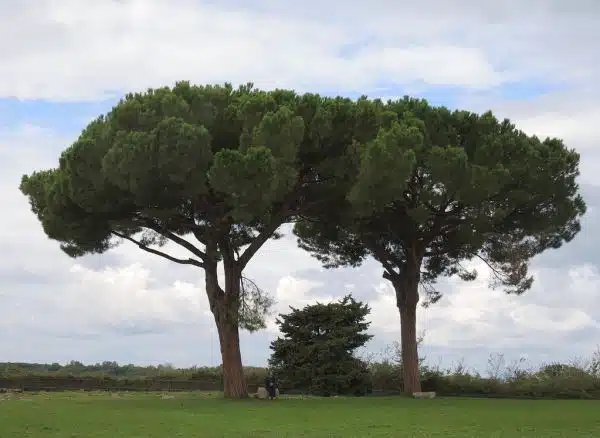

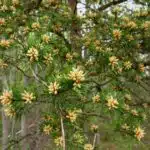






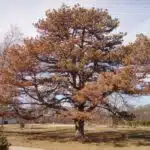


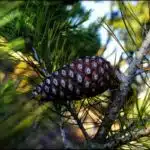




![Calculating How Much Stone Dust You Need 20 [Blog Post]Stone Dust © Oxfam Australia](https://green-life.blog/wp-content/uploads/2023/05/GdZVzgTqPhjq-150x150.jpg.webp)

